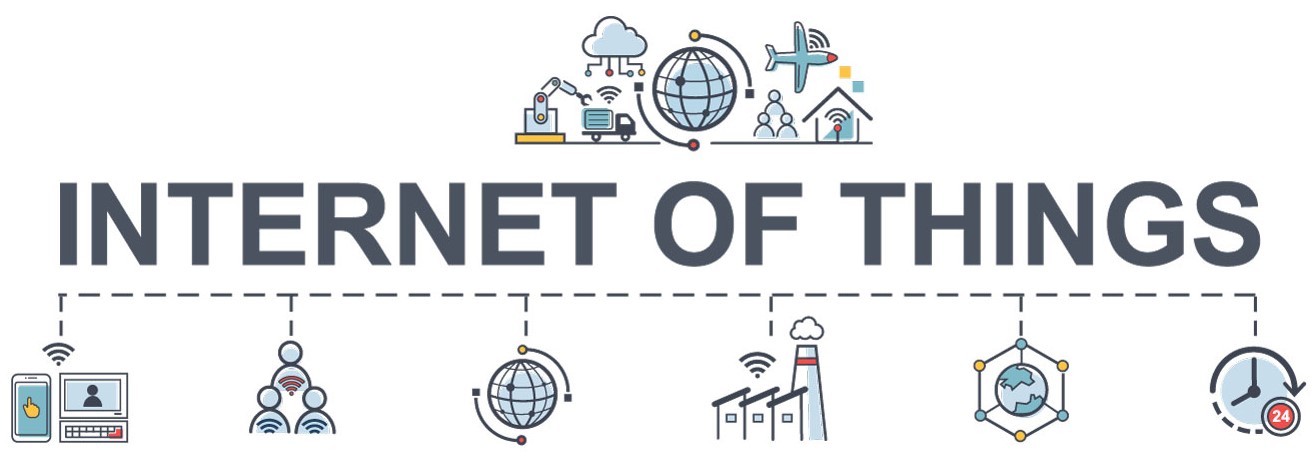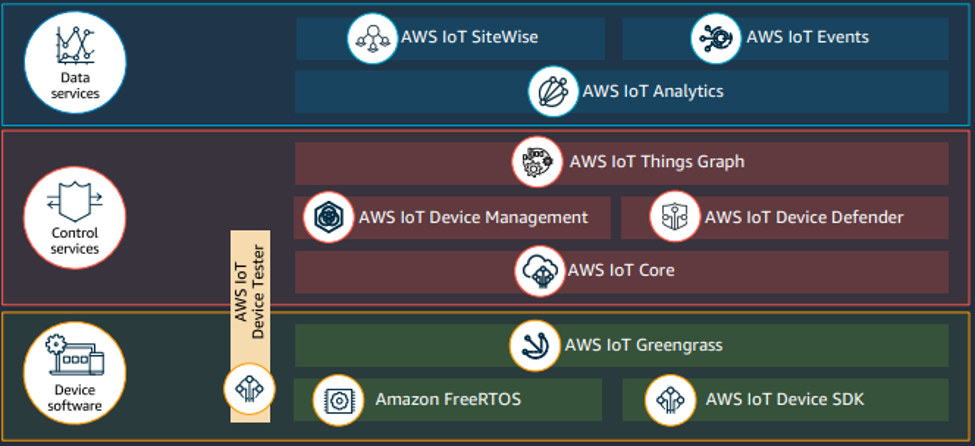Last Fall, I got the opportunity to take a short trip down to San Francisco and attend the free AWS (Amazon Web Services) IoT Builders Day workshop. This event was hosted at the AWS Loft where events and other workshops related to AWS services are frequently held. This event had about 60 people in attendance and focused on the use of AWS alongside STMicroelectronics hardware to demonstrate the capabilities of connecting your device to the internet to be part of the Internet of Things.
AWS State of the Union
Most people already have some idea of what “Internet of Things” means, most likely as a consumer of it. But Amazon’s approach to what it means was not what I originally had in mind and helped me understand it from another perspective, the business perspective. The way it was phrased to those of us in attendance during the State of the Union portion of the workshop was, “Nobody buys IoT, they seek business outcomes and digital transformation.” For me, this transformed my meaning of IoT from connecting something to the internet just for the sake of being connected to the internet into it being a way of leveraging the internet to improve revenue, operational efficiency, and user experience in a plethora of applications beyond being able to give your dog treats while you are at work. With this new mindset, the workshop continued with a demo and a hands-on exercise to exhibit some of services provided by AWS.
Image: AWS to show IoT applications
Connecting MCU Based Devices to the Cloud
This part of the workshop had everyone configure an ST microcontroller to stream accelerometer data to an S3 bucket in the cloud. Of the many AWS services, this activity took advantage of Amazon FreeRTOS, AWS IoT Core, and Amazon S3. Only being familiar with FreeRTOS, everything else was all new to me.
Image: AWS to show AWS Services
In short, once the MCU was reflashed, connected to Wi-Fi, and broadcasting MQTT messages, visualizing the accelerometer data for the fleet of devices in the room on the cloud was really just a dozen clicks away. With this workshop being my first experience with implementing any part of a cloud solution, I was honestly surprised with how simple AWS has made the process and I continued to appreciate the capabilities of using the cloud. After finishing this exercise, I started to ponder, what are some other applications of this cloud stuff? Amazon quickly had an answer for that question in the next demo.
Over the Air Update
While taking a short break for lunch, the reps from AWS and ST collected our attention while we ate to demonstrate a solution for performing over the air update. This solution also consisted of Amazon FreeRTOS, AWS IoT Core but added AWS IoT Device Management and some proprietary bootloader code from ST. They showed the serial log of the microcontroller as it sat just waiting to be told that there was a pending update. From AWS IoT Device Management, they explained the different options there were to push out new firmware images to specific, subsets, and fleets of devices. After configuring to only push the update to this one device, send was pressed and within seconds, the serial log showed that it was downloading the new image. ST then gave some insight as to what their proprietary code was doing from a high level. I found this overview enlightening as I had recently just worked on a project that implemented OTA and ST’s design likened that of Simplexity’s.
The Rest of the Workshop
The remainder of the day was slated for another workshop demonstrating another AWS solution. This one required everyone to have multiple devices connected to the internet. Unfortunately, just as it happens to the rest of us, the Amazon Loft began to have unexpected network issues that prevented us from making much progress on this activity. As the Loft scrambled to fix the issue, the attendees took it upon themselves to visit with their neighbors and start the networking reception a little earlier than anticipated.
Overall
I learned a lot about AWS in this one-day workshop and gained a new perspective of what the “Internet of Things” really is. I also got a chance to make some new connections with other engineers in my first trip to Silicon Valley.
The last thing that I wanted to share was a quote that was presented during the event that I really liked:
“There is no compression algorithm for experience”
I thought it was very relatable to Simplexity and working in engineering services where we are not only delivering a product but selling our expertise in product development.



